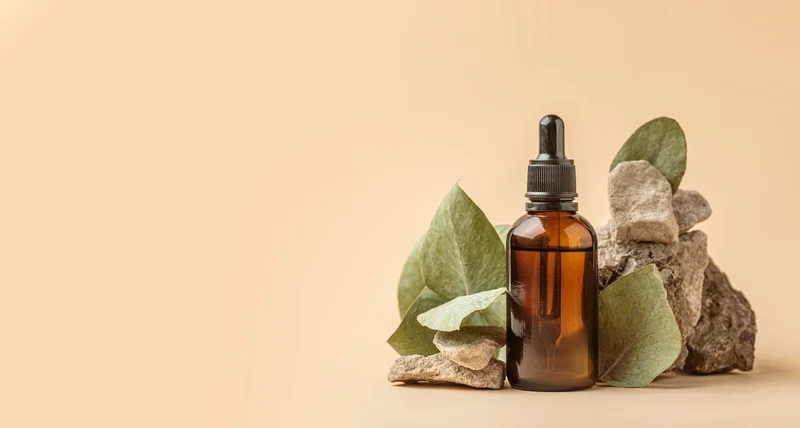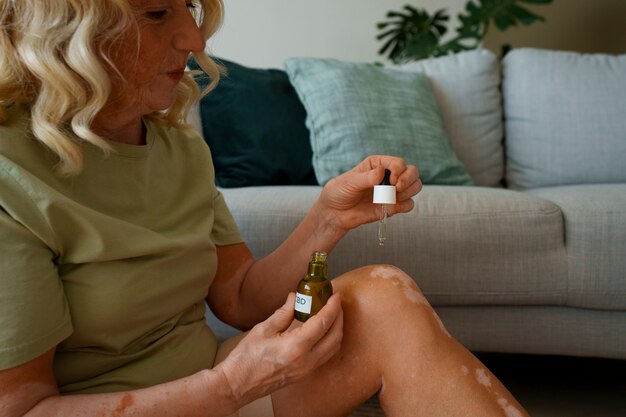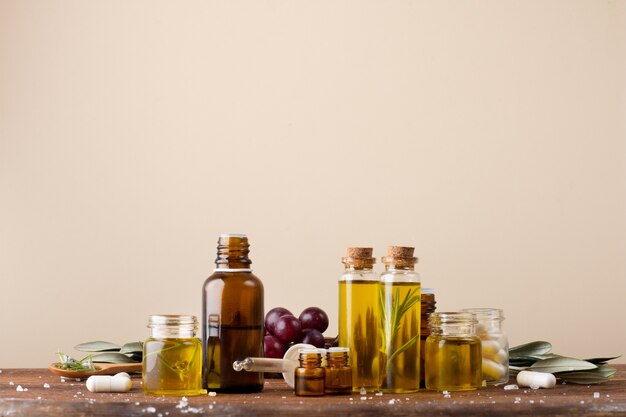Ask Ayurvedic doctor a question and get a consultation online on the problem of your concern in a free or paid mode. More than 2,000 experienced doctors work and wait for your questions on our site and help users to solve their health problems every day.
Shop Now in Our Store
Dashmool Tail – Ayurvedic Oil for Joint Health & Inflammatory Relief

Introduction to Dashmool Tail
Dashmool Tail is a revered Ayurvedic herbal oil renowned for its potent anti-inflammatory and analgesic properties. Formulated from a blend of ten medicinal roots, this oil is traditionally used to alleviate joint pain, reduce inflammation, and support overall musculoskeletal health. By integrating Dashmool Tail into daily wellness routines, individuals can harness natural remedies to manage conditions like rheumatism, osteoarthritis, headaches, migraines, and more, fostering a harmonious balance between body and mind.
Historical Roots & Ayurvedic Significance
In Ayurveda, Dashmool (meaning "ten roots") refers to a group of ten medicinal herbs that are foundational in treating a variety of ailments, particularly those related to the musculoskeletal system. Ancient Ayurvedic texts, such as the Charaka Samhita and Sushruta Samhita, highlight the use of Dashmool formulations for their profound healing capabilities. Dashmool Tail, an oil-based preparation, exemplifies Ayurveda’s holistic approach by combining the synergistic effects of these herbs to detoxify the body, reduce inflammation, and restore doshic balance. Its historical significance lies in its versatility and effectiveness in addressing chronic pain and inflammatory conditions through natural means.
Key Approaches in Dashmool Tail Uses
1. Herbal Composition & Therapeutic Benefits
Dashmool Tail is meticulously prepared using a blend of ten specific roots known for their therapeutic properties. The key ingredients typically include:
- Guluchi (Tinospora cordifolia): Boosts immunity and reduces inflammation.
- Shirish (Albizia lebbeck): Alleviates pain and supports joint health.
- Agnimantha (Premna integrifolia): Relieves muscular pain and stiffness.
- Kantakari (Solanum xanthocarpum): Detoxifies the body and reduces swelling.
- Prishnaparni (Dryopteris filix-mas): Eases joint pain and supports flexibility.
- Kushta (Picrorhiza kurroa): Detoxifies and purifies the blood.
- Bala (Sida cordifolia): Strengthens muscles and reduces pain.
- Gokshura (Tribulus terrestris): Enhances muscle strength and reduces inflammation.
- Manjistha (Rubia cordifolia): Purifies the blood and alleviates skin conditions.
- Shankhapushpi (Convolvulus pluricaulis): Calms the nervous system and reduces stress-related pain.
The synergy of these herbs in Dashmool Tail works to:
- Alleviate Joint Pain & Inflammation: Reduces swelling and discomfort in joints, making it ideal for conditions like arthritis and rheumatism.
- Enhance Mobility: Improves flexibility and range of motion in affected areas.
- Support Musculoskeletal Health: Strengthens muscles and connective tissues, preventing further deterioration.
- Promote Detoxification: Cleanses the body of toxins that contribute to inflammation and pain.
- Calm the Nervous System: Reduces stress and anxiety-related symptoms that can exacerbate pain.
2. Therapeutic Application & Preparation Techniques
Applying Dashmool Tail involves a precise method to ensure maximum therapeutic benefits:
- Preparation: The ten medicinal roots are cleaned, dried, and ground into a fine powder. This powder is then infused into a base oil, typically sesame or coconut oil, through a slow heating process to extract the active compounds.
- Application: Warm Dashmool Tail is gently massaged onto the affected areas, such as joints, muscles, or areas experiencing pain and inflammation. The warmth of the oil enhances circulation and facilitates deeper penetration of the herbal extracts.
- Massage Techniques: Traditional Ayurvedic massage techniques, including circular motions and gentle pressure, are employed to maximize the oil’s effectiveness in reducing pain and improving mobility.
3. Dietary and Lifestyle Adjustments
To complement the effects of Dashmool Tail, Ayurveda recommends:
- Balanced Diet: Consuming foods rich in anti-inflammatory properties, such as leafy greens, turmeric, ginger, and omega-3 fatty acids.
- Hydration: Maintaining adequate fluid intake to support detoxification and overall health.
- Routine: Establishing a consistent daily routine that includes regular sleep patterns, stress management practices, and gentle exercises like yoga.
- Avoiding Triggers: Steering clear of activities and foods that may exacerbate inflammation and pain, such as excessive caffeine, alcohol, and processed foods.
4. Integration with Other Ayurvedic Therapies
Dashmool Tail can be effectively combined with other Ayurvedic treatments to enhance overall healing:
- Abhyanga (Oil Massage): Regular oil massages using Dashmool Tail promote relaxation, reduce muscle tension, and enhance circulation.
- Swedana (Herbal Steam Therapy): Helps in relieving muscle stiffness, detoxifying the body, and improving respiratory function.
- Panchakarma Detoxification: Assists in eliminating deep-seated toxins, balancing doshas, and promoting holistic healing.
5. Yoga & Physical Therapy
Incorporating specific yoga poses and physical therapy exercises can amplify the benefits of Dashmool Tail:
- Pranayama (Breathing Exercises): Enhances oxygen flow, reduces stress, and promotes relaxation.
- Yoga Asanas: Poses that target flexibility and strength, such as Warrior II, Downward Dog, and Bridge Pose, support joint health and reduce pain.
- Physical Therapy: Gentle stretching and strengthening exercises tailored to individual needs help maintain joint mobility and muscle strength.
How Dashmool Tail Works: The Science Behind the Approach
Dashmool Tail leverages the bioactive compounds in its herbal ingredients to manage pain and inflammation effectively:
- Anti-inflammatory Properties: Herbs like Guduchi, Shirish, and Bala contain compounds that inhibit inflammatory pathways, reducing swelling and pain in joints and muscles.
- Analgesic Effects: The oil’s formulation helps numb pain receptors and soothe irritated tissues, providing immediate relief from discomfort.
- Circulatory Enhancement: The application of warm oil improves blood flow to affected areas, promoting the delivery of nutrients and oxygen necessary for tissue repair and regeneration.
- Detoxification: Dashmool Tail aids in the removal of toxins that contribute to inflammation and pain, supporting the body’s natural healing processes.
- Muscle Relaxation: Ingredients like Agnimantha and Shankhapushpi help relax tense muscles, reducing stiffness and improving mobility.
Choosing the Right Ayurvedic Remedies & Therapies
When selecting Dashmool Tail:
- Certified Ayurvedic Practitioners: Consult professionals trained in Ayurveda to receive personalized treatment plans tailored to your specific needs.
- High-Quality Herbs: Ensure the oil is prepared using organic, pure herbs to maximize safety and efficacy.
- Reputable Sources: Purchase Dashmool Tail from trusted Ayurvedic pharmacies or certified practitioners to guarantee authenticity and quality.
Recommended Dosage & How to Use Dashmool Tail
The dosage and application of Dashmool Tail vary based on individual constitution (Prakriti), severity of symptoms, and overall health. Typically:
- Adults: Apply Dashmool Tail to the affected areas once or twice daily. Gently massage the oil into the skin using circular motions to enhance absorption and effectiveness.
- Children: Dosage should be adjusted based on age and weight, as advised by an Ayurvedic practitioner.
Usage Tips:
- Consistency: Regular application as per the prescribed schedule enhances therapeutic outcomes.
- With Warm Oil: Slightly warming the oil before application can improve absorption and effectiveness.
- Alongside Dietary Adjustments: Complementing the oil with recommended dietary and lifestyle changes ensures holistic benefits.
Potential Side Effects & Precautions
While Dashmool Tail is generally safe when used correctly, some precautions include:
- Skin Sensitivity: Some individuals may experience mild skin irritation or allergic reactions. It is advisable to perform a patch test before widespread application.
- Medical Conditions: Those with underlying health conditions or taking other medications should seek professional advice to prevent interactions.
- Pregnancy and Nursing: Pregnant or nursing women should consult with an Ayurvedic practitioner before use.
- Proper Dosage: Adhering to the recommended dosage and application guidelines ensures safety and maximizes benefits.
Frequently Asked Questions (FAQ)
How does Dashmool Tail help in managing rheumatoid arthritis?
Dashmool Tail combines the anti-inflammatory properties of herbs like Guduchi, Shirish, and Bala to reduce joint swelling and pain associated with rheumatoid arthritis. By balancing the doshas and supporting the immune system, the oil alleviates symptoms and promotes joint health.
Can Dashmool Tail be used for osteoarthritis?
Yes, Dashmool Tail is effective in managing osteoarthritis by reducing inflammation, strengthening connective tissues, and enhancing joint mobility. Its herbal formulation supports the healing of damaged joints and alleviates pain.
How does Dashmool Tail benefit cervical and lumbar spondylitis?
For cervical and lumbar spondylitis, Dashmool Tail helps reduce spinal inflammation, relieve pain, and improve flexibility. Its adaptogenic and anti-inflammatory properties support the nervous system, enhancing overall spinal health and reducing discomfort.
Is Dashmool Tail effective for bursitis?
Yes, Dashmool Tail can alleviate bursitis by reducing inflammation and pain in the affected bursae. Its anti-inflammatory herbs help soothe the swollen tissues, promoting quicker recovery and reducing discomfort.
How should Dashmool Tail be integrated into daily life for diffuse joint pain?
For diffuse joint pain, Dashmool Tail should be applied consistently as per the prescribed dosage. Coupled with a balanced diet, regular exercise, and stress management techniques like yoga and meditation, the oil can effectively manage and reduce widespread joint pain.
Are there any interactions between Dashmool Tail and conventional medications?
While Dashmool Tail is generally safe, it may interact with certain medications. It is essential to inform your healthcare provider about all supplements and herbs you are using to avoid potential interactions and ensure safe use.
Where can I find authentic Dashmool Tail formulations?
Authentic Dashmool Tail can be sourced from reputable Ayurvedic pharmacies, certified practitioners, or trusted online Ayurvedic stores. Always verify the quality and authenticity before purchase to ensure effective treatment.
Conclusion & Expert Insights
Dashmool Tail offers a powerful, natural solution for managing joint pain and inflammatory conditions through the synergistic strengths of ten medicinal roots. By addressing the root causes of doshic imbalances and promoting overall well-being, this Ayurvedic oil serves as a valuable tool in holistic health practices. Consulting with qualified Ayurvedic professionals ensures personalized and effective use, integrating ancient wisdom into modern wellness strategies for sustained joint health and quality of life.
References & Further Reading
- Lad, V. (2002). Ayurveda: The Science of Self-Healing. Lotus Press.
- Sharma, P.V. (1995). Ayurvedic Healing: A Comprehensive Guide. Lotus Press.
- National Institute of Ayurveda:
- Journal of Ayurveda and Integrative Medicine for research articles on herbal treatments and joint health.
- Mukerjee, P.K., et al. (2010). "Adaptogenic and Anxiolytic Effects of Ashwagandha (Withania somnifera) in Experimental Models." Journal of Ethnopharmacology, 132(2), 185-188.
(Please consult these sources or professionals for more detailed information on herbal properties and clinical studies.)
This article is checked by the current qualified Dr Sujal Patil and can be considered a reliable source of information for users of the site.



